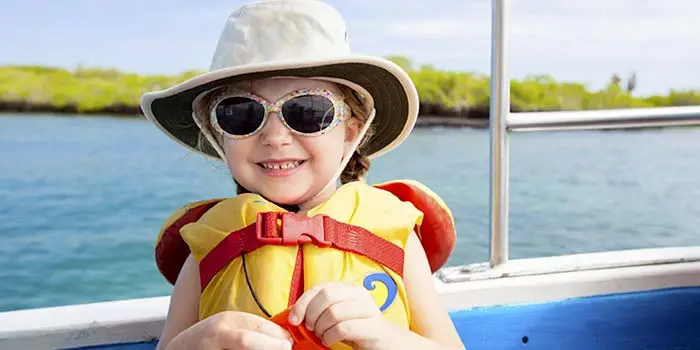Quiz: What is Your Boating Safety IQ?


Do you have what it takes to be a safe boater? Is your boating knowledge ship shape? Test your safe boating IQ with our boater safety quiz!
A “float plan” is defined as…
a) Your plan for staying afloat if and when you find yourself submerged in water.
b) The number of life jackets aboard a vessel.
c) The act of informing a person not aboard your vessel of where you’re going and how long you expect to be gone.
d) A big pile of buoyant items aboard your vessel.
True/False: If the water is clear in a lake or pond, it is safe to assume that it is deep enough to dive in.
A wearable life jacket should be…
a) US Coast Guard approved.
b) Fitted properly for the intended wearer.
c) In good and serviceable condition.
d) Properly stowed (readily accessible).
e) All of the above.
Drinking while boating can be as dangerous as drinking while driving. On average, what percent of boating-related incidents involve alcohol?
a) 75%
b) 50%
c) 30%
d) 80%
True/False: Children under 13 years old, must be wearing a life jacket when your boat is moving, unless they are below deck or in an enclosed cabin.
When boating with pets, you should…
a) Keep plenty of fresh drinking water available.
b) Have your first water outing last a long time so that your pet can acclimate to boat movement.
c) Provide a shaded area.
d) Protect their feet from the boat surfaces that can get very hot in the sun.
e) All of the above.
f) A, C, and D.
Which of the below can lower your risk of drowning?
a) Alcohol use.
b) Ability to swim.
c) Not wearing a life jacket.
d) Lifeguard supervision.
e) B & D.
If a boat capsizes, you should:
a) Abandon ship and swim for shore.
b) Use the boat for flotation.
c) Swim as far away from the boat as you can.
d) None of the above.
Before you go boating, you should…
a) Check that your boat is in good condition and you have all required safety equipment on board.
b) Report your trip to a friend.
c) Ensure that at least one other passenger on your boat can properly and safely drive the vessel.
d) Check the weather.
e) Pack plenty of fresh water and fuel for the duration of the trip.
f) All of the above.
True/False: “Port” and “Starboard” refer to the left and right sides of a ship when looking forward toward the bow.
In a situation where two boats cross paths, one vessel is considered the “give-way vessel” and the other is the “stand-on vessel.” The “give-way vessel” is responsible for…
a) Turning around.
b) Avoiding a collision with the other vessel.
c) Staying straight on course.
d) Stopping to let the other boat pass.
e) A & B.
If a sail boat and a motor boat crossed paths, which would be determined the “give-way vessel?”
a) Whichever boat is smaller.
b) Whichever boat is larger.
c) The motor boat because it can more easily get out of the way than the non-motorized sail boat.
d) The sail boat because it is easier to turn than a motor boat.
True/False: When two boats meet head-on, both should keep to the starboard side.
Before taking the boat out for the first time this season, ensure you will be covered in the event of an accident with Recreational Vehicle Insurance.